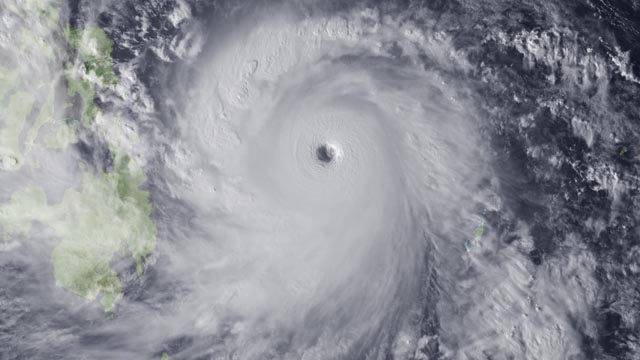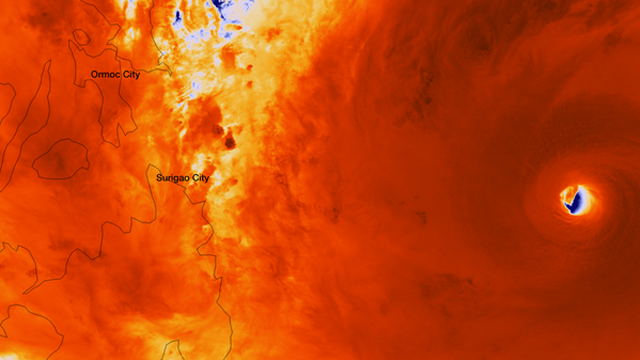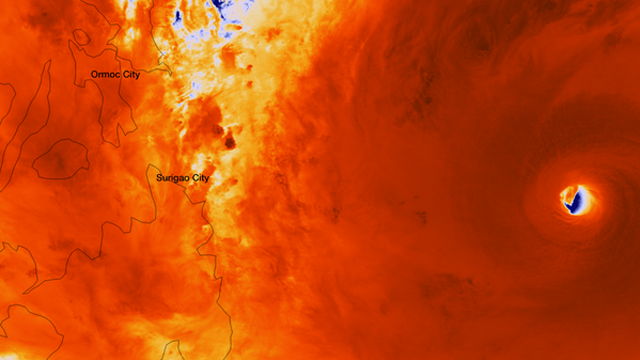
(Getty)
Super Typhoon Haiyan is expected to hit the Philippines at 11 p.m. EST tonight. When it lands it will have become one of the most powerful storms in the history of mankind. With winds of nearly 200 mph, meteorologist Michael Palmer has said that the cyclone will result in “significant loss of life.”
Here’s what you need to know:
1. The Storm Was Created Thanks to ‘Ideal’ Conditions

(NOAA)
A report by the National Oceanic and Atmospheric Administration have said that this storm was created from “ideal” conditions, low wind, and warm ocean temperature. It was formed on October 28 over the Pacific Ocean. As the temperatures remain warm around the storm, the more energy it will absorb, making it more and more powerful. Weather.com’s Michael Palmer said, “It’s a perfectly symmetrical storm with the eye completely clear os it is as strong as you can get.”
2. The Storm Will Hit 2 Islands in the Philippines
At 11 p.m. EST the storm will land on the islands of Samar and Leyte. A typhoon that hit the islands in 1990 killed 700 people, with this storm predicted by NBC News to be “even worse.” Strong winds are already reported in the area where the storm will hit. Schools and businesses are close with ferry services canceled.
3. The Navy Called This the Strongest Storm So Far This Year

(NOAA)
Whether or not this storm becomes the most powerful of all time, the U.S. Navy’s Joint Typhoon Warning Center in Hawaii have confirmed this as the strongest storm so far in 2013. Local politician for one of the affected areas, Ben Evardone, told The Associated Press: “I have issued a call to prepare for the worst.”
4. The Philippines Is Hit by 20 Typhoons Per Year
The last major typhoon to hit the country was in 2012 in the island of Mindanao, in the southern area of the country. That weather system was responsible for the deaths of 1,100 people.
5. Typhoons and Hurricanes Are the Same Thing
A NOAA report says that hurricanes, cyclones and typhoons are all the same weather system and named differently just because of where they hit. The report reads:
The ingredients for these storms include a pre-existing weather disturbance, warm tropical oceans, moisture, and relatively light winds. If the right conditions persist long enough, they can combine to produce the violent winds, incredible waves, torrential rains, and floods we associate with this phenomenon.
In the Atlantic, hurricane season officially runs June 1 to November 30. However, while 97 percent of tropical activity occurs during this time period, there is nothing magical in these dates, and hurricanes have occurred outside of these six months.
